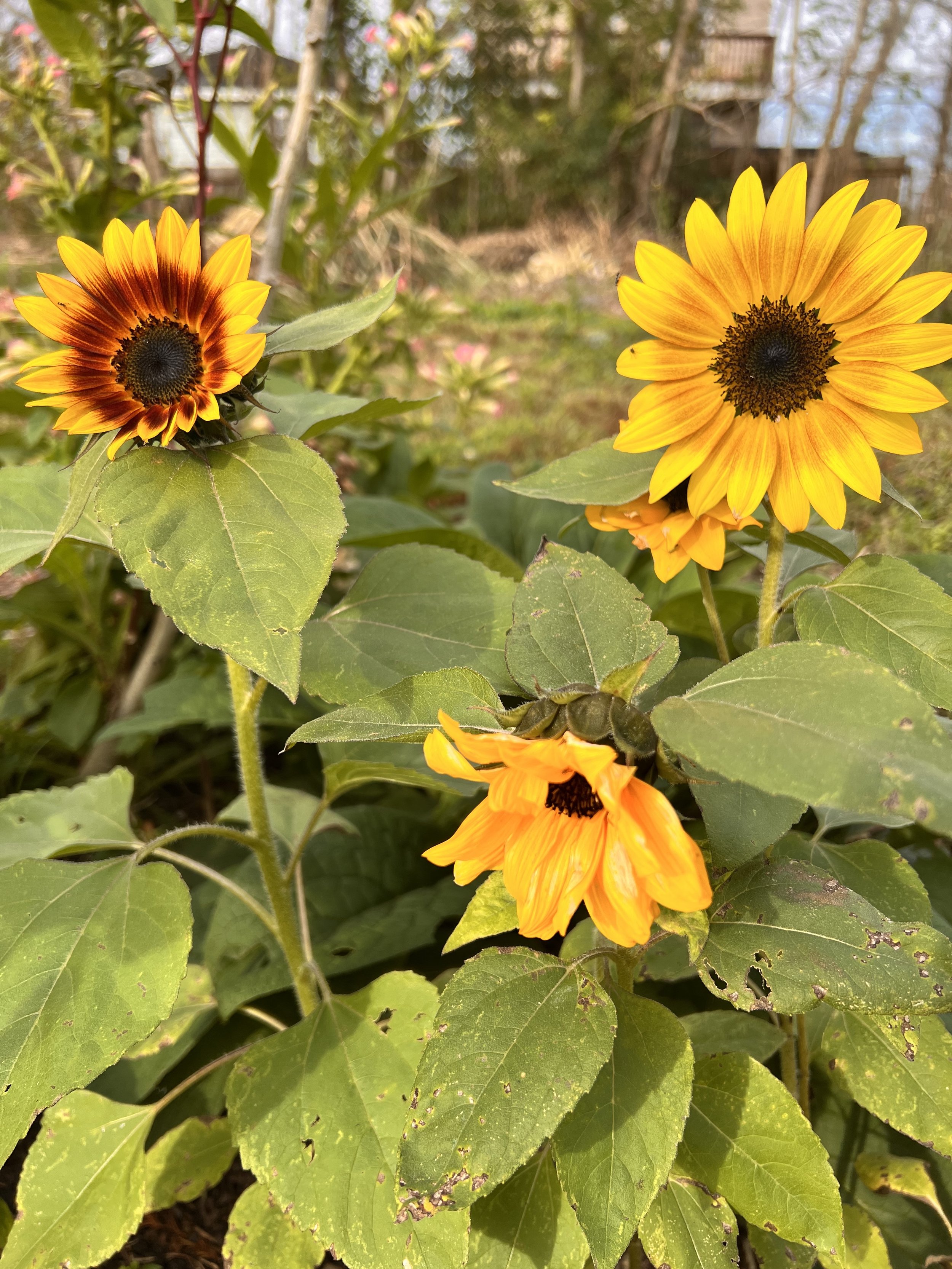Meet the plants: sunflower
Power is of two kinds. One is obtained by the fear of punishment and the other by acts of love. Power based on love is a thousand times more effective and permanent then the one derived from fear of punishment.
Mahatma Gandhi
Helianthus annuus
The sunflower has been cultivated in North America since 3000 BCE, where it was developed for food, medicine, dye, and oil. The glorious plant was exported to the rest of the world by Spanish conquistadors around 1500. Tsar Peter the Great fell in love with the sunny flowers when he saw them in the Netherlands, and brought the Sunflower to Russia where their popularity grew. By the 19th century, the country was planting two million acres of them every year. Demand for the sunflower grew when people discovered that sunflower seed oil was not banned during Lent, unlike the other oils the Russian Orthodox Church banned from consumption.
The plant journeyed back to the USA in the seed sacks of mennonite farmers escaping Soviet pogroms. American sunflower production exploded when Missouri farmers began producing sunflower oil in 1946, with the aid of a mechanical seed crusher. Today it is one of the most important sources of cholesterol-free oil in the world.
The French call the sunflower tournesol, evoking the way the plant turns it’s head to bask in the sun. This behavior is called helioptropism; the young flower buds and blossoms will face east in the morning and follow the sun as the earth moves during the day. Because of this, the sunflower is thought to exemplify loyalty or adoration. Sunflower was used as a symbol of the Spiritual Church due to its property of turning towards sun as “spiritualism turns toward the light of truth”.
Sunflowers can be used to remove or extract toxic elements from soil like arsenic, lead and uranium. After Chernobyl disaster, they were use to remove cesium-137 and strontium-90 from a nearby pond. It is associated with fertility because of its abundant seeds; it is said that women who wish to conceive should eat them.
“Sunflowers end up facing the sun, but they go through a lot of dirt to find their way there.” ― J.R. Rim
sunflowers at solitary gardens
The sunflower asks us to remain loyal to a power source without question. How has loyalty to power hindered or helped social evolution?
What does loyalty mean to you?
Who or what are you committed to, beholden to? What do you source your energy from?
How do you decide who or where to place your loyalty or trust? What are the qualifying factors? Consider, specifically, brands, news or media outlets, icons, principles, and individuals.
Are there any things you remain loyal to, perhaps out of fear or habit, that do not serve you or your highest purpose?
